Fog City Boy on the Camino Ingles
San Francisco, November 6, 2019
From the Sea to Santiago
4 October 2019: Thames Barrier to Ferrol
The gentle reader is advised that the Fog City Boy is publishing his blog reports out of order this time around. In fact, I walked the Cotswold Way in England (from Chipping Campden to Bath), then followed by walking the Thames Path (from the headwaters of the River Thames to the Thames Barrier in London) before walking the Camino Ingles. Nevertheless, I’ve decided to publish my adventures on this most recent Camino, and then report on my adventures in England in subsequent posts.
The Thames Path ends at the Thames Barrier, one of the largest movable flood barriers in the world, designed to protect Central London from tidal surges. It stretches 520 meters across the river and comprises 10 steel gates which can be raised across the river whenever a tidal surge is predicted. When raised, the barrier’s main gates are as high as a five-story building and are as wide as the opening of the Tower Bridge.

But more about that in a future posting!
Once I reached the Thames Barrier, I returned to Greenwich, where I had stayed the night. I collected my pack and set out for the London Overground, joining at the Greenwich Station on the South West Railway..
Eventually, changing trains, I reached Gatwick Airport, where I overnighted before departing the next morning for A Coruña by way of Madrid. It was a long day, but eventually I reached A Coruña Airport, and secured a taxi that delivered me to Ferrol about 40 minutes later.
 As charming as the English countryside is, and as cheery as the English pubs are, the Fog City Boy was pleased to be back in Spain with a Camino walk awaiting him the next day.
As charming as the English countryside is, and as cheery as the English pubs are, the Fog City Boy was pleased to be back in Spain with a Camino walk awaiting him the next day.
5 October 2019: Ferrol to Neda
Historically, peregrinos coming from England and port cities north of Spain often sailed to A Coruña to begin their perigrenacion a Santiago (76 km). More recently, for pilgrims desiring to receive a Compostela in Santiago attesting to their pilgrimage, an alternate route has been established to Santiago from Ferrol (123 km). To qualify for a Compostela, a pilgrim must have walked at least 100 kilometers (200 if by bicycle or on horseback) upon arriving in Santiago. I elected to begin in Ferrol.

About midway to Santiago, I took a day and visited A Coruña . But more about that later.
The Ferrol Hotel Gran is about one kilometer from the official starting point for the Camino Ingles. I walked through the old town to reach the monolith that marks the traditional point of departure. The old town in Ferrol looks the part. The image is of the Municipal Palace, not the hotel!

The monolith does not resemble the one pictured in John Brierley’s guidebook. But a representative of the tourist information office walked me to it and assured me that it was really the one.

The Way proceeds back through the old town, passing a fountain dating from 1584, and the Iglesia de San Francisco.
The Way continues past a major Spanish naval base. Peering through the fence, among many other treasures, I observed a small triple-expansion steam engine no doubt salvaged from a Spanish naval vessel no longer in service. Shades of the SS Jeremiah O’Brien, moored at Pier 45 in San Francisco! (The Jeremiah’s steam plant is considerably larger than the one in the weeds.)

The Way continues past the naval base and continues along the estuary at the mouth of the Ria Ferrol.

The Way passes the Iglesia San Martin de Xubia, before beginning an extended hike through woodlands and parks.
Emerging from the parkland, Neda comes into view.

On this Camino, I walked with a daypack and engaged the Correo [Post Office] to transport my main pack from lodging to lodging at a total cost of 20 euros for the entire Camino Ingles. Upon arriving in Neda, I surveyed the scene, and then went out to explore the town and the neighboring town of Narón.
The view from my room at Pension Maragota was spectacular.

The Banco Hispano Americano was intriguing, but no longer extant. The fountain, however, is fully operational.
6 October 2019: Neda to Pontedeume
This stage of the Camino Ingles started out with a hike from Pension Maragota up the hill and then gently down into the principal business streets in Neda. A cross adorned a small park along the Way on the main roadway through Neda.

The Way crosses through the grounds of Iglesia de Santa Maria and, astonishingly, through a children’s play park that is a part of the church complex, before continuing across a stone bridge and back through town. Within the church is a plaque placed by the Confraternity of St. James commemorating the Holy Year of 2004.

Out of Neda, the Way traverses less populated areas and encounters mild but meaningful elevation. At one point, I looked back to see the major shipyard across the estuary.

At Fene, the Way passes a stone structure that long ago harnessed the power of the stream beneath it. Not far away was a much newer structure also making use of the water from the rivulet.
Spain continues to build and maintain these neighborhood lavandarias, though they are rarely used and sometimes because of stagnant water, are unusable.
In Fene, I paused for a café con leche and met up with two peregrinas from the United States (one from Las Vegas and one from the Boston area) whom I had met on the Way the previous afternoon. We would see each other from time to time along the Way. And one, at the conclusion of her perigrenacion, remained in Santiago for a week to volunteer at the Pilgrim Welcome Center validating Credencials and issuing Compostelas!
A little farther along, an enterprising denizen of Cabanas offered conchas for sale. The price is donativo.

Near the bridge across the Rio Eume, the Way takes a short detour past a quiet cruceiro before continuing on to Pontedeume. “Pontedeume” means “bridge of (the) Eume.”

The bridge dates from the 16th Century. Pontedeume is a substantial and busy town.
My lodging for the night was at a very small but comfortable hotel on the outskirts of town. It was a steep climb along the Way to get there, and when I arrived, it was closed. Or at least not open. It did not have the look of an abandoned building and I guessed correctly that it would open later in the afternoon. I passed the time at a nearby café. The view was memorable.
7 October 2019: Pontedeume to Betanzos
I was up before dawn and enjoyed a nicely prepared continental breakfast at the hotel. I headed out and up along the Way, reaching a vantage point from which to enjoy the sunrise.
I managed to take a self-portrait.

In Miño, I saw a simple water tank serving a household and a garden.

Shortly thereafter, the Way disappears into a eucalyptus plantation and begins a lengthy climb. Another enterprising denizen, or perhaps simply a supporter of the Camino, had left cold drinks for passersby. Again, donativo. The upside down milk crates provided a welcome place to sit and recover from the steep hike.

Once out of the woods, I came upon a newly constructed horrero or granary or corn crib. Almost every farm has one or more. But not every horrero has a farm. Many Spaniards seemingly just like to display them. Which accounts for the bus stop constructed to resemble a horrero. I also saw these two years ago on the Camino Primativo.
Lovely gardens along the way.

And a return to rural countryside.
The Way traverses country lanes as it gets close to Betanzos. Along the Way is an active and interesting fonte. The fonte de gas – presumably because the water produced is, or at some time in the past, carbonated water.

The fonte dates from 1884. The inscription reads “por los ne cinos de la fuente” which seems to translate as “because of the source.”
A little farther along, the Way passes the Iglesia San Martin, and then the Way drops down toward Betanzos.

The peregrino enters Betanzos by crossing a medieval bridge and then passing through an arched gate and proceeding up a cobbled street to a gracious square in the center of town.
The Fog City Boy found his hotel for the night, did his laundry in the en suite sink, and hung it out to dry. And then explored the town.
8 October 2019: Betanzos to Presedo
By design, this day was a short day. It was a rainy day and the Fog City Boy had to crawl into his poncho and dodge the rain as best he could. One respite was at the Iglesia San Esteban.
And then on to Presedo where a half dozen peregrinos gathered near the municipal albergue – waiting for it to open in the early afternoon. We gathered under a welcome covered parking lot that served the nearby parish church.


400 meters down the road was a charming and peregrino friendly café.
Once the albergue was available, I captured my pack which had been delivered there earlier in the day. I found a local taxi and we journeyed about thirty minutes to Cambre, a suburb of A Coruña, where I would spend the next two nights. I walked for several kilometers into A Coruña, eventually returning to my lodging by taxi.
The Hotel Rural La Marisqueira is a small but commodious two-star hostelry apparently built by a retired fisherman. The name translates as “the seafood restaurant.” Inside the bar there is a representation of what must have been parts of his fishing boat. Fun to explore.

9 October 2019: Exploring A Coruña
I took a suburban bus into the center of A Coruña. It was a pleasant day to just explore the town.

The impressive City Hall anchors a broad plaza.

Walking through the old town led me to Iglesia Santiago where the Camino from A Coruña begins.

I returned to La Marisqueira by bus and enjoyed a nice seafood dinner while looking forward to returning to my Camino early the next day.
10 October 2019: Presedo to Meson do Vento
A taxi collected me shortly before 8 a.m. and returned me to Presedo. By prior arrangement with the Correo, they would collect my pack later that morning and deliver it to Meson do Vento. I continued on with my daypack. The Way passes by pastureland. I paused to capture the vista including the sheep in the distance.
Two astute dogs noted my presence, broke from their station among the sheep, and came running.
Though noisy, they were not threatening.
The Way climbs steeply toward Hospital de Bruma, a village of a few stone houses and the site of two albergues, one of which is the restored medieval pilgrim hostel. However, I had a reservation at a comfortable hotel about one mile off the Camino route. I arrived in time for lunch and then explored the town. The parish church is newly constructed or reconstructed. The cruceiro before the church is of an earlier vintage.
11 October: Meson do Vento to Sigueiro
I was out the door shortly before sunrise. A mist hugged the ground all around me.
In Ordes there is a small café with a large statue of St. James dominating the whimsical sculpture garden adjacent to it.

The Way continues on to San Paio Buscas passing by Iglesia San Pelayo with an 18th century statue of the child martyr Pelayo, martyred in 926 at age 13 during the caliphate of Abderraman III.

The Way gradually shifts from a quiet rural setting . . .

. . . to a modern, urban environment with motorways and factories.


I had arrived in Sigueiro. I stayed at an albergue, albeit one that offered a nearby apartment that I shared with an American couple, also on the Camino.
12 October 2019: Sigueiro to Santiago
I set out from the albergue before sunrise, pausing for a café con leche (grande) at a café in the center of town. And then set out again, crossing the Rio Tambre into rural and semi-rural countryside.
An ingenious farmer had stationed a female scarecrow where she could guard his cornfield.
The Way continues through a heavily forested tract. While waymarks guide the peregrino, not all signage relates to the perigrenacion!

Arriving in the suburbs of Santiago, the Way continues past an ancient gatehouse and aqueduct.


A few minutes further, the spires of Iglesia de San Francisco come into view. And shortly thereafter, the last cruceiro before entering the old town and the pathway to Praza da Obradoiro.



A festive atmosphere begins as one approaches the old town.

 Sadly, the festive atmosphere does not extend to all on the approaches to the Plaza and to the Cathedral. There have been alms seekers each time I have visited Santiago. Generally they are quite passive, but occasionally they walk from cafe to cafe asking for money. I prefer to give them food rather than money.
Sadly, the festive atmosphere does not extend to all on the approaches to the Plaza and to the Cathedral. There have been alms seekers each time I have visited Santiago. Generally they are quite passive, but occasionally they walk from cafe to cafe asking for money. I prefer to give them food rather than money.
A sense of grandeur pervades the plazas and boulevards surrounding the Cathedral.
The cathedral square, Praza da Obradoiro, was teeming with peregrinos who were celebrating the completion of their respective peregrenaciones. [Click anywhere on the link.]
The Fog City Boy felt the same way! He prevailed on a peregrina he had met several days before to take his picture with the Cathedral in the background.

It felt good to be back.
The last day of a Camino pilgrimage (the Fog City Boy has now completed six of them) begins with a strong sense of anticipation. And contemplation, too. My experience on the Camino Ingles was very much like my earlier experiences. Contemplation and gratitude. Gratitude to have been able to undertake a series of long walks this year that aggregated about 250 miles.
Is there another Camino in the Fog City Boy’s future? Yes, for sure! The Camino del Norte? The Chemin du Puy? Hadrian’s Wall? Time will tell.
And with that, I’m off.
Knute Michael
 If you would like to receive future posts as they are published, scroll back up and click n the “follow” button on the lower right corner of your monitor screen. This feature may not be available on cell phones.
If you would like to receive future posts as they are published, scroll back up and click n the “follow” button on the lower right corner of your monitor screen. This feature may not be available on cell phones.



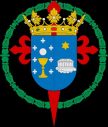
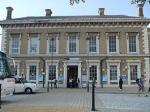



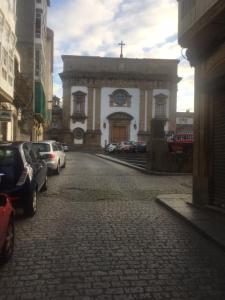


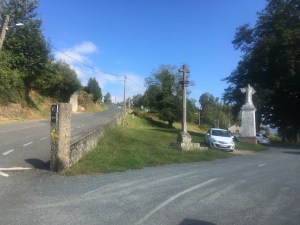
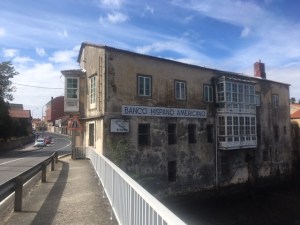

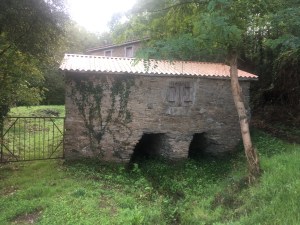
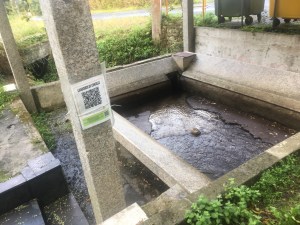
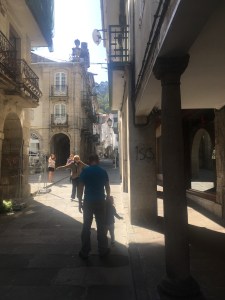


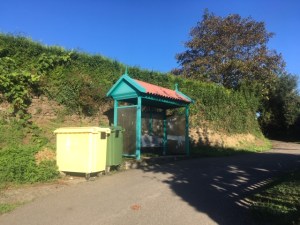
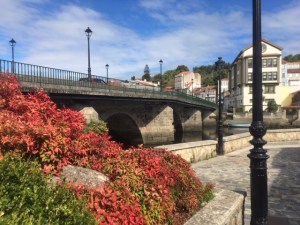

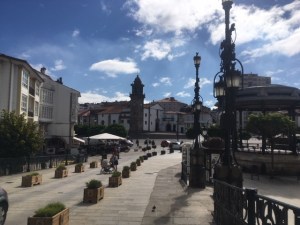


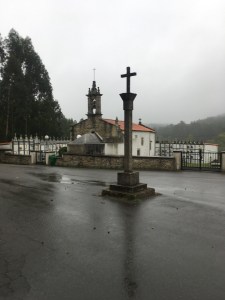


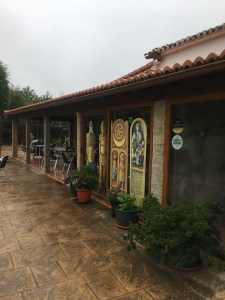
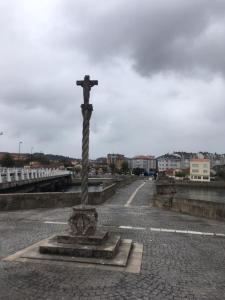

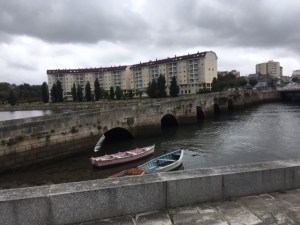



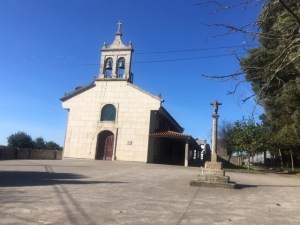
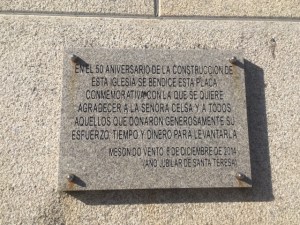

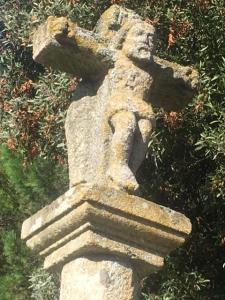
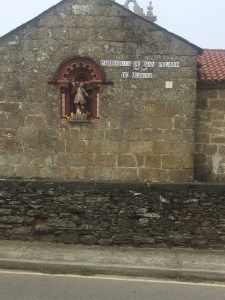
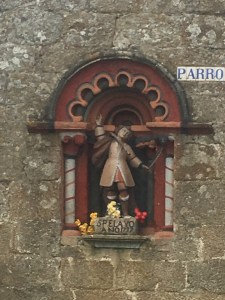




Thank you, Knute, for keeping me on your blog list. I enjoy every step you take. I am anxious to hear about walking The Cotswolds. Glad your feet are still taking you far and wide! Sue Manning
Sent from my iPhone
>
P.S. Are you able to change your records as to my email address? It’s suemanning121@gmail.com. Thanks! Sue
Sent from my iPhone
>
What a wonderful and blessed journey. We are so lucky to see and watch your adventures..Don’t see place where I can continue to observe your pilgrimage but add me to the list if you can
Thanks so much for remembering me, Mike. As always, love your story and I am happy that you have found the way… -S.S.
>
Enjoyed your story of this latest Camino. We may have overlapped in England as we were walking the Cumbrian Way (Ulverston to Carlisle through the Lake District and into Northumbria) about the same time. It was beautiful, wet, and challenging – often all on the same day! All best, Helen D’Amico Perry
Thats quite an achievement Mike. About 80 rounds of golf where I live and much more interesting scenery. I look forward to your port reports and the Thames path travelogue too. All the best on your caminos. Hugo
Congrats! Great!
Excellent.
Mike you
‘re one of a kind ,smooth sailing!!!
Our Legend is truly an amazing Peregrino. Such a joy to read The Fog City Boy posts and savor your adventures through your wonderful explanations and photos. Thank you as always for sharing this magical part of your life with us Mike
Eileen
WOW! another wonderful journey along “the way”. 250 miles is amazing! Love your pictures and narration – just beautiful. You are awesome! Good Luck on the next camino. N.